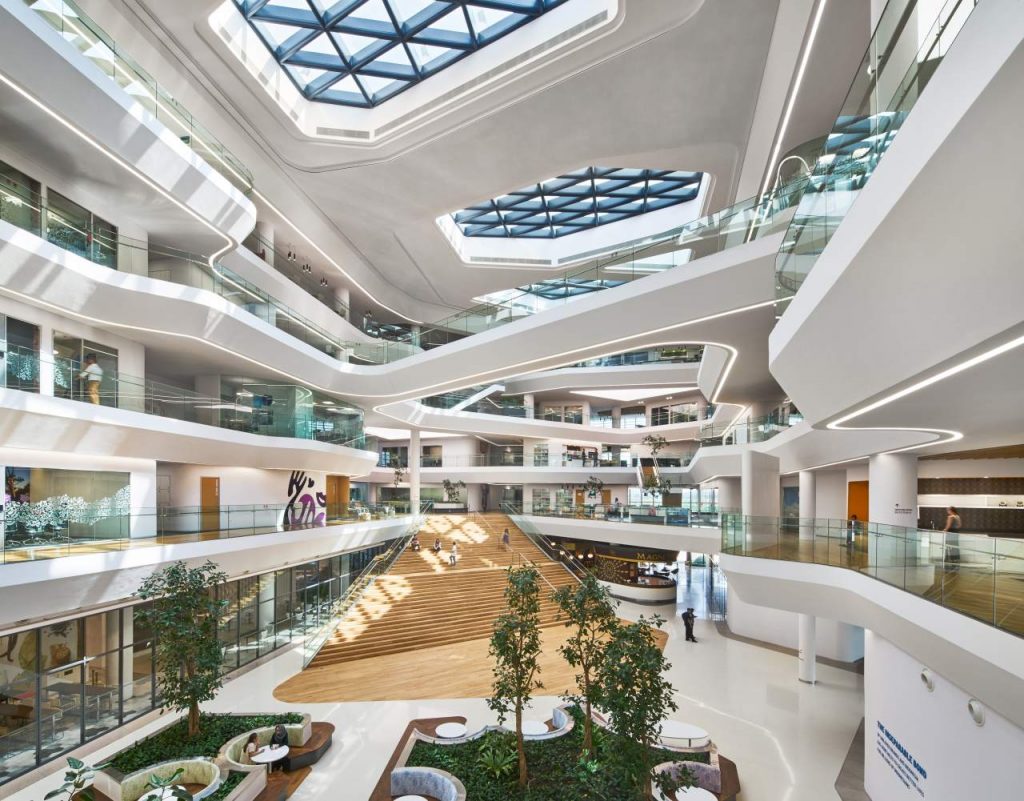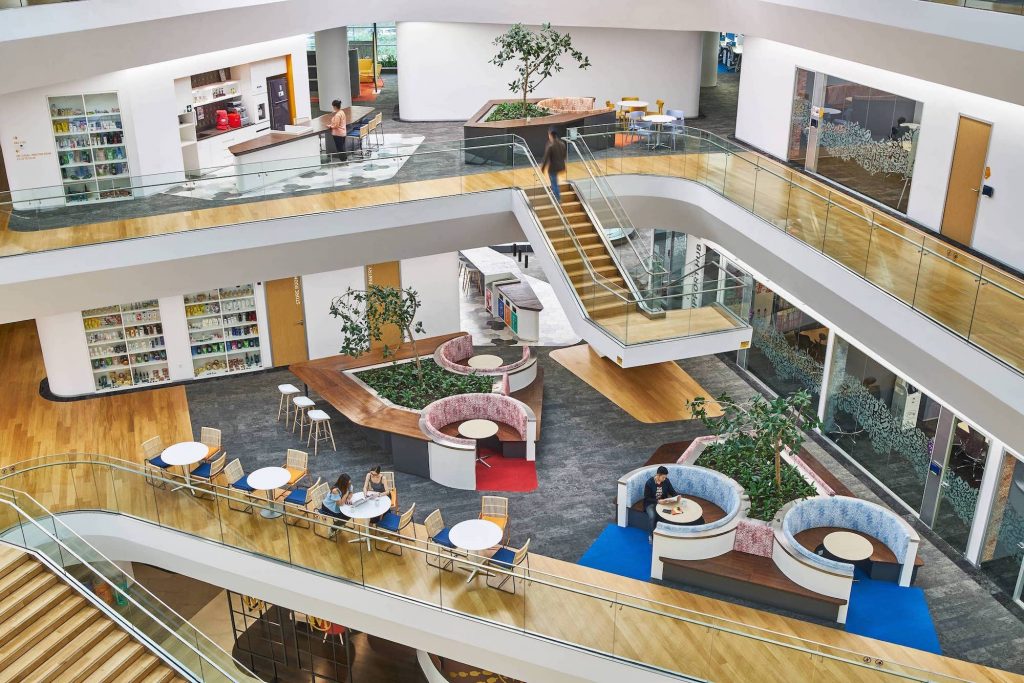Fewer desks, more coffee: Possible changes in offices after COVID-19
March 15, 2021
Employees returning to the office might find fewer desks and more room to chat over coffee, as companies offer more space for interaction.
Lockdowns that have taken hold since March last year have forced millions of people to work from home — a shift that has been embraced by many companies as a possible long-term solution, allowing cost savings and flexibility for workers.
Spacious atrium and lobby of Unilever’s headquarters (photo courtesy of Aedas).
READ MORE: The New Workplace by Heather Banerd. Published in FuturArc Mar-Apr 2018 issue.
Idle workplaces have pushed some governments and developers to look into converting office buildings into residences, shops, restaurants and even indoor farms.
A survey of more than 2,000 office workers in 10 countries published in November found that while about one in three wanted to continue working from home after the pandemic, about the same amount also wished to maintain some access to an office.
READ MORE: Aemulus at the Runway.
“Social connection is … something that the workforce has missed through this virtual environment that we find ourselves (in)” said Tom Carroll, head of corporate research for Europe at JLL, the real estate firm that carried out the poll.
Companies have also become increasingly aware that things like training new staff, solving problems and coming up with new ideas are better done in person, he told the Thomson Reuters Foundation.
This is leading to a rethink of the purpose and design of workplaces that goes beyond giving workers more room to comply with health and safety regulations, he said.
“Most of us have Zoom fatigue.”
“Most of us have Zoom fatigue… so the idea is to try to reduce our use of technology when we’re in the office,” Amanda Stanaway, a principal at architectural firm Woods Bagot who heads the workplace interiors department.
Social areas would be mixed with a few tech-heavy stations where employees can do computer work in a better, more ergonomic set up than they have at home, she said. But change might take some time to happen, she added.
For the full report, please click here.
READ MORE: Naiipa Art Complex. Published in FuturArc Nov-Dec 2018 issue.
READ MORE: Construction safety: The pandemic’s impact
The International Labour Organisation reported that every 15 seconds, a worker dies from a work-related accident or disease worldwide. Safety standards vary in different Asian countries, but the construction industry remains the biggest contributor of cases and fatalities. The project stoppages, shortage of workforce, disrupted supply chain and other challenges during the pandemic in 2020 may have increased the risk of incident and fatality.
To read the complete article, get your hardcopy at our online shop/newsstands/major bookstores; subscribe to FuturArc or download the FuturArc App to read the issues.
Previously Published Commentary, Online Exclusive Feature
Contact us at https://www.futurarc.com/contact-us for older commentaries.



